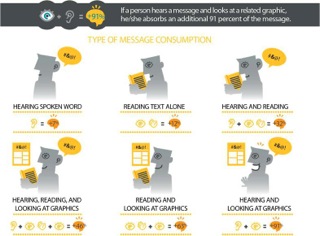PSAV White Paper Details Effect of AV on Adult Learning

- PSAV has teamed with BrainStrength Systems to produce a White Paper—Audiovisual Technologies and Adult Learning in Meetings—which is now available from PSAV to help event planners better understand how a sensory-rich environment engages the brain, facilitates learning, enlivens the senses, and contributes to an enhanced meeting experience.
- PSAV is a supplier of audiovisual services and event technologies to hotels, associations, producers and meeting planners worldwide. The company provides a range of event technology and with more than 800 partner locations worldwide. BrainStrength Systems is a learning and performance organization dedicated to bringing the valuable information from current neuroscience to ordinary people for use in their lives and at work. The company works with organizations to improve performance and culture, and with meeting and learning professionals to support their work with the latest research and brain-compatible strategies.
- "Audiovisual technology has come a long way from its early days of overhead projectors to today's current usage of PowerPoint or Keynote slides, video, lighting, and music," said Meg Fasy, PSAV’s vice president of industry relations. "More aptly called event
echnologies, AV plays a very important part in what an audience experiences and how they learn and retain the meeting's message. While attendees look forward to the entertainment value that AV brings to an event, neuroscience is actually proving that these event technologies are enhancing learning and improving the entire meeting experience."
The PSAV/BrainStrength study found that people always demonstrate more learning in the following ways—see graphic at right.
"Everything we experience occurs through our senses: sight, sound, smell, taste, and touch," Fasy said. "Our brain registers and responds to everything in our environment and, with modern brain imaging technologies, neuroscientists are now able to pinpoint what’s happening in our brains as we undergo experiences. This allows us to identify how our brains interpret and respond to our world, and to use this information to design meeting environments and contexts that maximize learning and produce memorable attendee experiences. Only then are we achieving meeting objectives."
When information is presented orally through a presenter talking, studies reveal that individuals remember about 10 percent of it when tested three days later. This figure goes up to 65 percent when visual imagery (a picture vs. text) is added. Individuals have better recall for visual information, and several studies have shown that recognition doubles for a picture as compared to text.
"Our purpose in compiling and reporting on this research is to provide meeting planners and facility managers with an understanding of the vital role audiovisual technology plays in the meeting experiences that attendees have," Fasy said. "Often, AV is just an item on a checklist—simply a logistic that must be handled. If, instead, it is used intentionally to work with the brain’s capacities, audiovisual technologies can produce specific and targeted effects that maximize learning and memory, convey your message in memorable ways, and produce the meeting outcomes you desire.
"We invite everyone interested in learning more about how sensory learning impacts meetings to request a copy of Audiovisual Technologies and Adult Learning," she added. "By incorporating the principles presented in the White Paper, we guarantee that meetings will be more memorable."
To obtain a copy of the White Paper, click here.
A daily selection of features, industry news, and analysis for tech managers. Sign up below.
The AVNetwork staff are storytellers focused on the professional audiovisual and technology industry. Their mission is to keep readers up-to-date on the latest AV/IT industry and product news, emerging trends, and inspiring installations.
